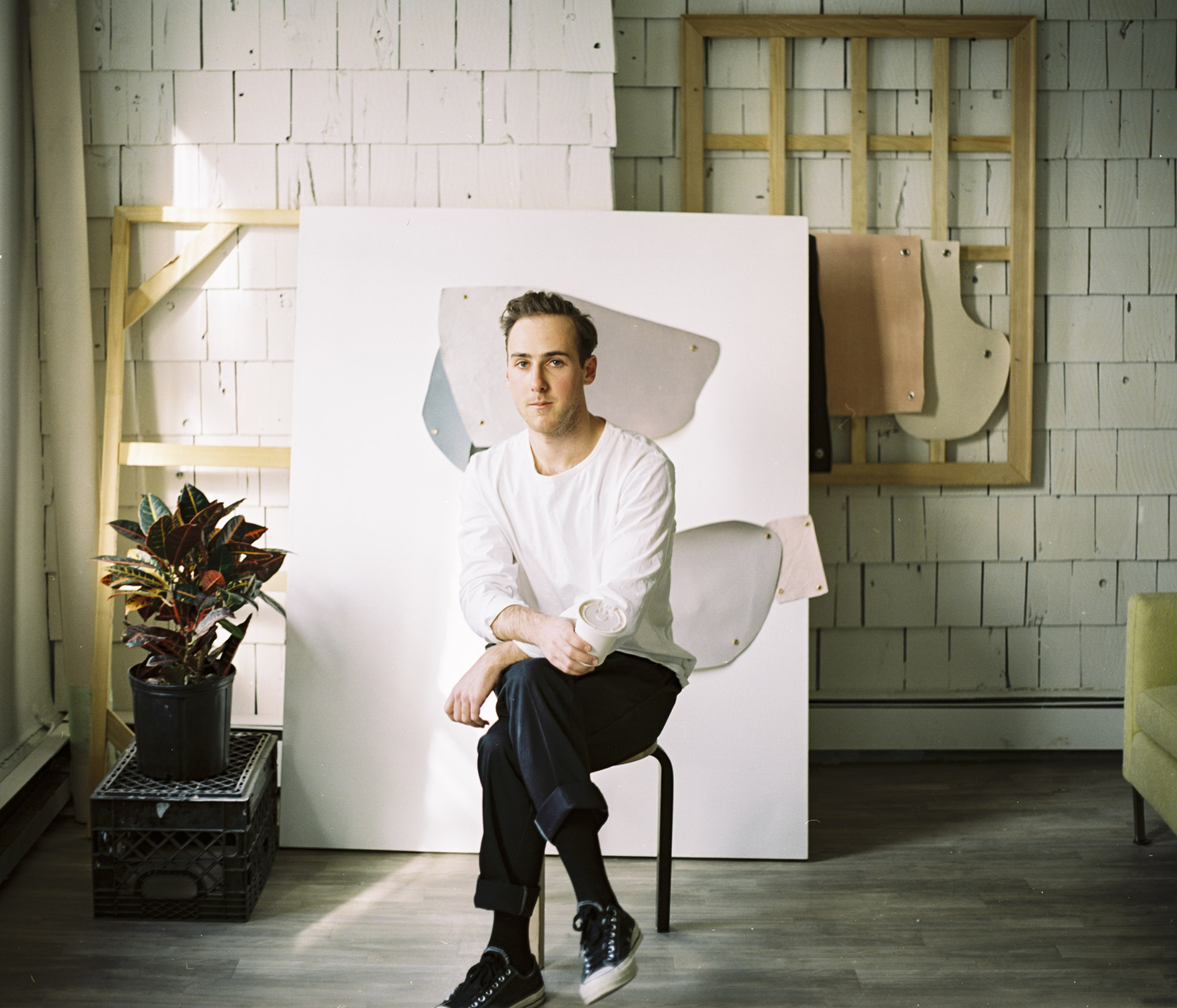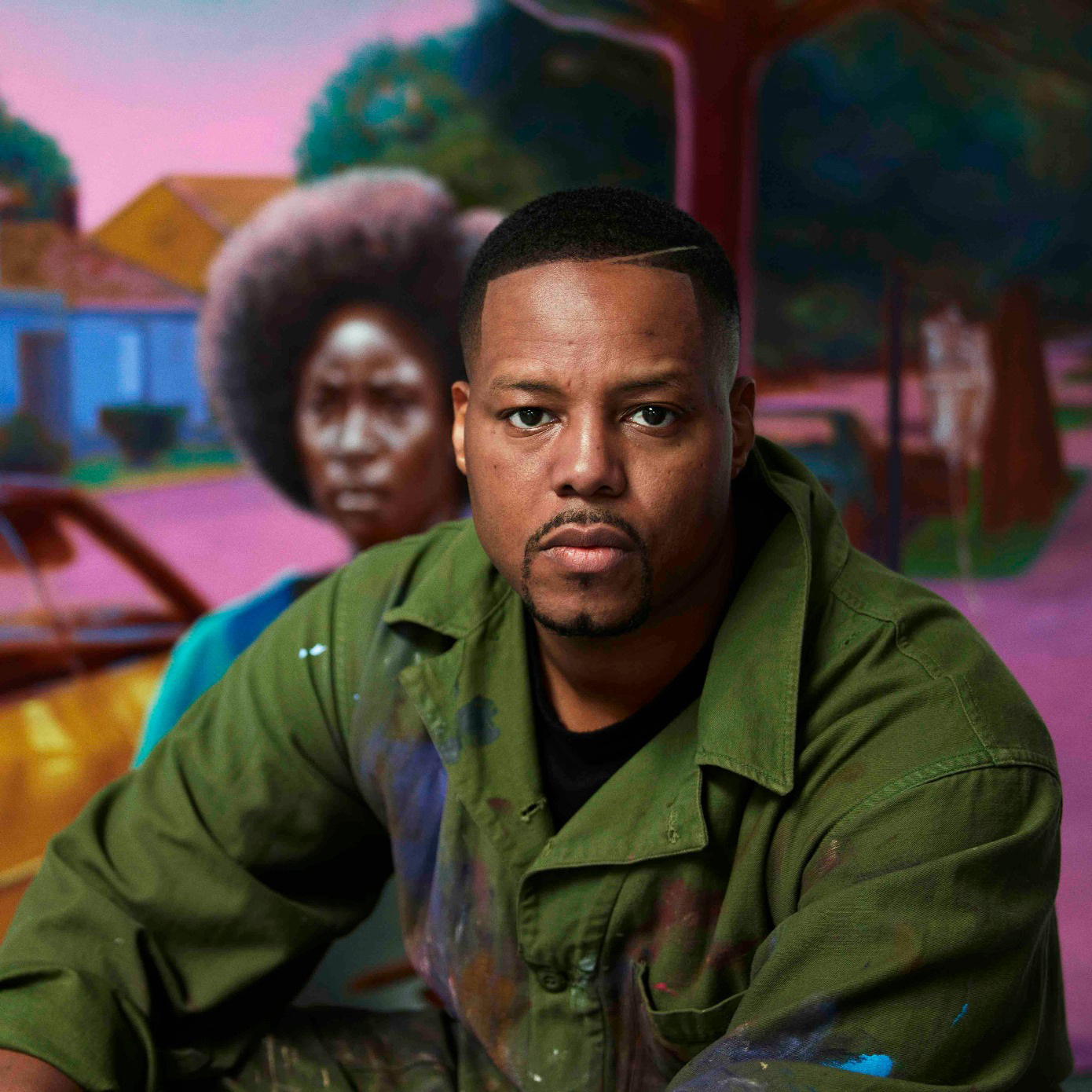
New York-based artist Taylor Baker is exploring the intersection of mediums and how we define them in his exhibition “Disintegration” curated by Jacob Gottlieb. The two spoke with Cultured to share what the roots of their practices are and the directions their work is heading in.
Generally the way one engages with a painting is a lot more static than with a sculpture, which oftentimes you can walk around. In your new venture into painting, what experience are you trying to create for the viewer by challenging the limits of the medium?
Taylor Baker: It’s true, there is a liberating feeling found in sculpture that you don’t always get in painting. Sculptures often reveal parts of themselves as the viewer moves, becoming more relatable as the work and the viewer share commonalities of matter and space. While venturing into painting, I wanted to carry that aspect along, as well as introduce an element of weight or gravity to the medium. So often, paintings are deceptively installed to float effortlessly for viewers to gaze upon. By creating paintings whose individual components seemingly expose themselves, I hoped to humanize the status often affiliated with painting while emphasizing the similarities of the two mediums and blurring the line a bit. 
What prompted your transition from sculpture to painting?
Baker: I’m fascinated by the stamina of painting, having maintained its status and aura within society for so long. It seems like for centuries, painting has been broken down, dissected, and even rejected, but remains one of—if not the most—highly regarded art forms. While I’ve always had a firm appreciation for certain paintings, I felt the medium as a whole lacks many of the abilities that sculpture or installation is capable of. I suppose it was a challenge to the medium and to myself to see if working within painting could bring me the same enjoyment that others mediums do.The shapes in your paintings are somewhat reminiscent of Ellsworth Kelly or Jean Arp. What artists or movements have inspired or shaped your work?
Baker: Ellsworth Kelly has definitely been a major influence on my practice. I owe a great deal of my inspiration to his work, whether it’s his shaped canvases—which similarly challenged ideas of what a painting is—or even his plant drawings which are amongst my favorite works of art. The formal qualities of my work often borrow elements from styles such as minimalism or biomorphic abstraction, but I’m most inspired by conceptual art. Artist like Duchamp and Joseph Kosuth have completely destroyed and defined my ideas of what art is and can be.This is your second solo show in New York. Aside from working in a new medium, how was the experience different from the first?
Baker: My first show was very different. I was still exploring ideas I had been interested in while at school. The works of that show were very mass-oriented, demanding space and toying with gravity to make heavy objects appear weightless. In this show I almost wanted to do the opposite. While the paintings are not very heavy themselves, the individual components of each one have a very evident presence, which is often lost in painting. I like to think of each canvas swatch as an individual paint stroke that is malleable enough pull off the wall. That idea seems to have translated quite literally in this show. 




